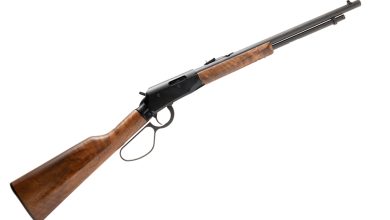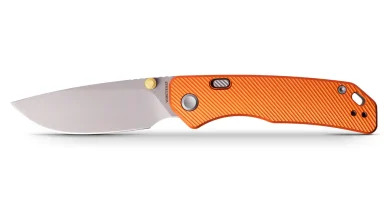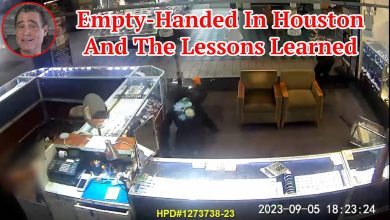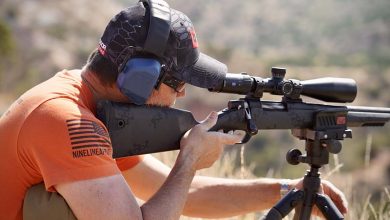SILENCER SATURDAY #331: Sound Science For Suppressor Lovers
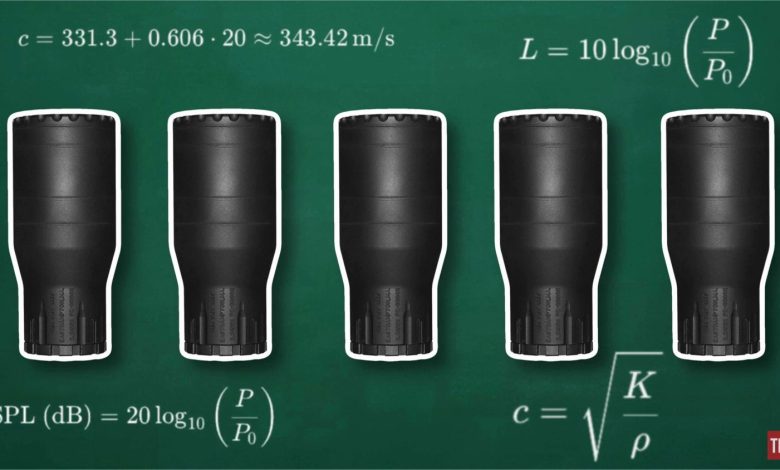
SILENCER SATURDAY #331: Sound Science For Suppressor Lovers
Good evening everyone and welcome back to TFB’s Silencer Saturday brought to you by Yankee Hill Machine, manufacturers of the brand new YHM 338 Bad Larry Suppressor. Today’s episode is a continuation of our basic knowledge series that pulls back the curtain on sound science for suppressor lovers and the physical properties of making gunshots quieter. Let’s take a look.
More @ TFB:
Before we get out our slide rules and pocket protectors, here’s my standard disclaimer. I am not an audio engineer, sound technician, or an audiologist. But I was in the AV club in the fourth grade, which pretty much makes me an expert. The only advice I can give is to protect your hearing at all costs.
If we boil silencers down to their most basic properties, their main function is to reduce the sound of a gunshot first, with other characteristics like, flash reduction and recoil mitigation coming in second. The sound of a gunshot is comprised of two main components: 1) the explosion of gunpowder in the barrel and unburnt gunpowder exploding/deflagrating outside the barrel and 2) the bullet breaking the sound barrier as it travels towards it’s target.
We can address the first issue with quality ammunition that is loaded specifically for the barrel length of the host firearm with the smallest amount of unburnt powder exiting the muzzle. The second issue is also addressed with properly loaded cartridges and sufficient barrel length calculations. Remember, the quietest shots and the best performing suppressors will be accompanied by bullets that travel below the speed of sound (subsonic ammunition).
Why is the sound barrier so important? Because, depending on the round, that noise can be louder than ,the explosion occurring inside and outside the barrel. Let’s dig a little bit deeper into the speed of sound.
The Speed Of Sound
The speed of sound varies depending on the medium it travels through and its temperature. In dry air at 68 degrees Fahrenheit, the speed of sound is approximately 1,125 feet per second. When an object, such as a bullet, travels faster than the speed of sound (supersonic speeds), it creates several phenomena:
- Sonic Boom: As the object exceeds the speed of sound, it compresses air molecules in front of it, creating a shock wave. This shock wave propagates outward and backward, creating a loud and explosive noise known as a sonic boom. The sonic boom can be heard as a loud thunderclap and can be strong enough to cause structural damage to buildings or windows.
- Shock Waves: Supersonic travel generates shock waves, which are areas of abrupt changes in pressure, temperature, and density. These shock waves can have significant effects on the performance and stability of the aircraft or object.
- Increased Drag: At supersonic speeds, the aerodynamic drag on the object increases dramatically. This is known as wave drag, which is caused by the formation of shock waves around the object. Specialized aerodynamic designs are required to minimize this drag and allow efficient supersonic travel.
- Changes in Aerodynamics: The aerodynamic characteristics of an object change significantly when it travels faster than the speed of sound. Aircraft designed for supersonic travel have features such as swept-back wings and pointed noses to reduce drag and improve stability at high speeds.
- Temperature Increase: The air friction and shock waves created at supersonic speeds generate heat, leading to a significant temperature increase on the surface of the object. This can require special materials and cooling techniques to prevent overheating.
While all of these are relevant to the shooting sports in general, the first and second bullet points are the main concern when evaluating the noise level of gunshots. In the first paragraph we discussed the speed of sound as being approximately 1,125 fps at optimal environmental conditions. But what if we shoot in different places in the country? Or different places in the world?
Both humidity and temperature will change the speed of sound. Take a look at the table below.
| Temperature (°F) | Humidity (%) | Speed of Sound (m/s) | Speed of Sound (ft/s) |
| -4.0 | 0 | 319.18 | 1047.18 |
| -4.0 | 50 | 319.8 | 1049.21 |
| -4.0 | 100 | 320.42 | 1051.25 |
| 14.0 | 0 | 325.24 | 1067.06 |
| 14.0 | 50 | 325.86 | 1069.09 |
| 14.0 | 100 | 326.48 | 1071.13 |
| 32.0 | 0 | 331.3 | 1086.94 |
| 32.0 | 50 | 331.92 | 1088.98 |
| 32.0 | 100 | 332.54 | 1091.01 |
| 50.0 | 100 | 338.6 | 1110.89 |
| 50.0 | 50 | 337.98 | 1108.86 |
| 50.0 | 0 | 337.36 | 1106.82 |
| 68.0 | 0 | 343.42 | 1126.71 |
| 68.0 | 50 | 344.04 | 1128.74 |
| 68.0 | 100 | 344.66 | 1130.77 |
| 86.0 | 0 | 349.48 | 1146.59 |
| 86.0 | 50 | 350.1 | 1148.62 |
| 86.0 | 100 | 350.72 | 1150.66 |
| 104.0 | 0 | 355.54 | 1166.47 |
| 104.0 | 50 | 356.16 | 1168.5 |
| 104.0 | 100 | 356.78 | 1170.54 |
Here’s the above data visualized on a line chart with temperature on the X axis, speed on the Y axis, and the three line colors are the three humidity levels.
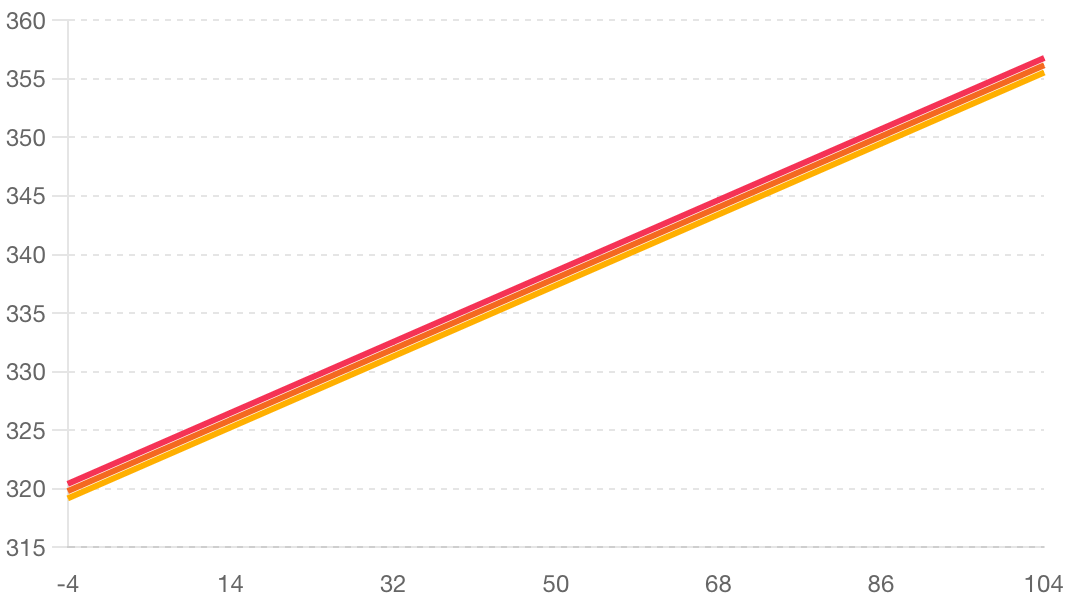
There is about 125 fps difference between the driest and coldest environments and the warmest and dampest environments.
The Speed Of Sound And Elevation
The main effect of elevation on the speed of sound is due to lower temperatures. The density of air decreases with altitude gains, but plays a lesser role in the change of the speed of sound.
Let’s take a look at the effect of elevation on the speed of sound.
| Elevation (ft) | Speed of Sound (m/s) | Speed of Sound (ft/s) |
| 0 | 325.86 | 1069.09 |
| 500 | 325.26 | 1067.13 |
| 1000 | 324.66 | 1065.16 |
| 1500 | 324.06 | 1063.19 |
| 2000 | 323.46 | 1061.22 |
| 2500 | 322.86 | 1059.25 |
| 3000 | 322.26 | 1057.28 |
| 3500 | 321.66 | 1055.31 |
| 4000 | 321.06 | 1053.34 |
| 4500 | 320.46 | 1051.37 |
| 5000 | 319.86 | 1049.4 |
| 5500 | 319.26 | 1047.43 |
| 6000 | 318.66 | 1045.46 |
| 6500 | 318.06 | 1043.49 |
| 7000 | 317.46 | 1041.52 |
| 7500 | 316.86 | 1039.55 |
| 8000 | 316.26 | 1037.58 |
| 8500 | 315.65 | 1035.61 |
| 9000 | 315.05 | 1033.64 |
| 9500 | 314.45 | 1031.67 |
| 10000 | 313.85 | 1029.7 |
Here’s the above data visualized on a line chart with elevation on the X axis and velocity on the Y axis.

What Is A Decibel?
A decibel (dB) is a unit of measurement used to express the intensity of a sound. It is a logarithmic unit that quantifies the ratio between two values, often used in acoustics, electronics, and other fields to describe sound levels and signal strengths. It is derived from the bel, a unit named after Alexander Graham Bell. The bel itself was deemed too large for practical use, leading to the adoption of the decibel, which is one-tenth of a bel.
Key Characteristics of Decibels:
- Logarithmic Scale: The decibel scale is logarithmic, meaning that a small change in decibels represents a large change in intensity. For example, an increase of 10 dB represents a tenfold increase in sound intensity, and an increase of 20 dB represents a hundredfold increase.
- Relative Measurement: Decibels measure the relative difference between two values, not the absolute value. This allows for the comparison of sound intensities or signal powers. The formula used is:

L is the level in decibels, P is the power of the sound or signal, and P0 is the reference power.
- Sound Pressure Level (SPL): In acoustics, the decibel is commonly used to measure sound pressure levels. The reference level for SPL is typically the threshold of hearing, which is the quietest sound that the average human ear can hear (20 micropascals). The formula for SPL is:

where P is the measured sound pressure and P0 is the reference sound pressure.
Applications of Decibels:
- Acoustics: Decibels are used to measure sound levels, including ambient noise, music, and industrial noise. Common references include 0 dB (the threshold of hearing) and 120 dB (the threshold of pain).
- Hearing Protection: Decibel levels are crucial in assessing the potential for hearing damage and setting safe exposure limits in noisy environments.
The below table illustrates how the power of a 170 dB sound diminishes as distance increases in six inch increments.
| Distance (inches) | Decibel Level (dB) |
| 1 | 170.0 |
| 6 | 154.44 |
| 11 | 149.17 |
| 16 | 145.92 |
| 21 | 143.56 |
| 26 | 141.7 |
| 31 | 140.17 |
| 36 | 138.87 |
| 41 | 137.74 |
| 46 | 136.74 |
| 51 | 135.85 |
| 56 | 135.04 |
| 61 | 134.29 |
| 66 | 133.61 |
| 71 | 132.97 |
| 76 | 132.38 |
| 81 | 131.83 |
| 86 | 131.31 |
| 91 | 130.82 |
| 96 | 130.35 |
Observations And Conclusions
It seems obvious, but if you are trying to squeeze every ounce of performance from your new suppressor, you have a more active role in the outcome than just properly mounting the attachment system. Check the box of the ammo for velocity tables, or even better, load your own ammo. And it’s easy to get confusing data if you ignore environmental factors like temperature, humidity, and elevation.
Thanks for reading. Be safe, have fun, and we’ll see you back here next week for another Silencer Saturday.




